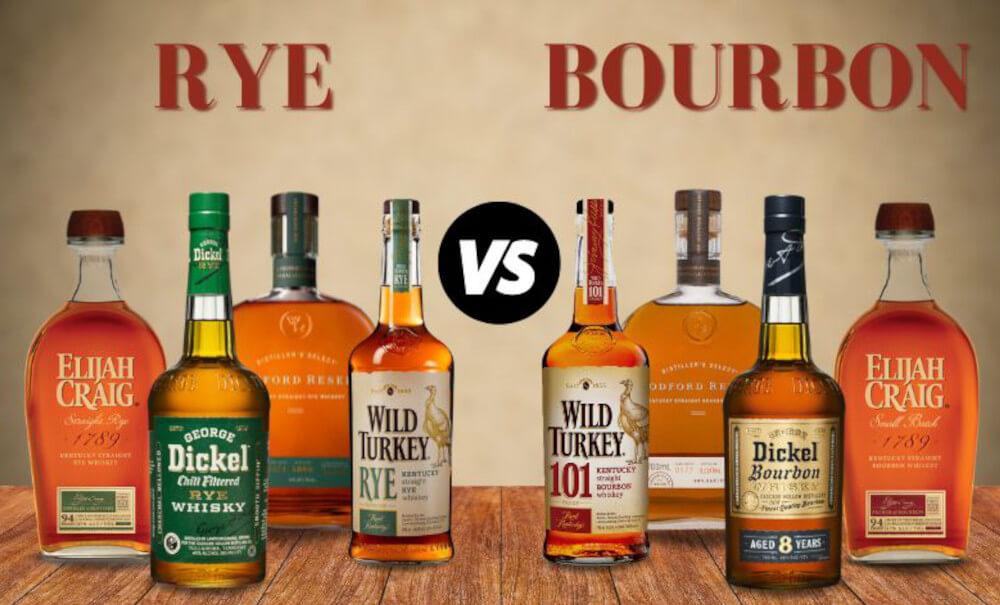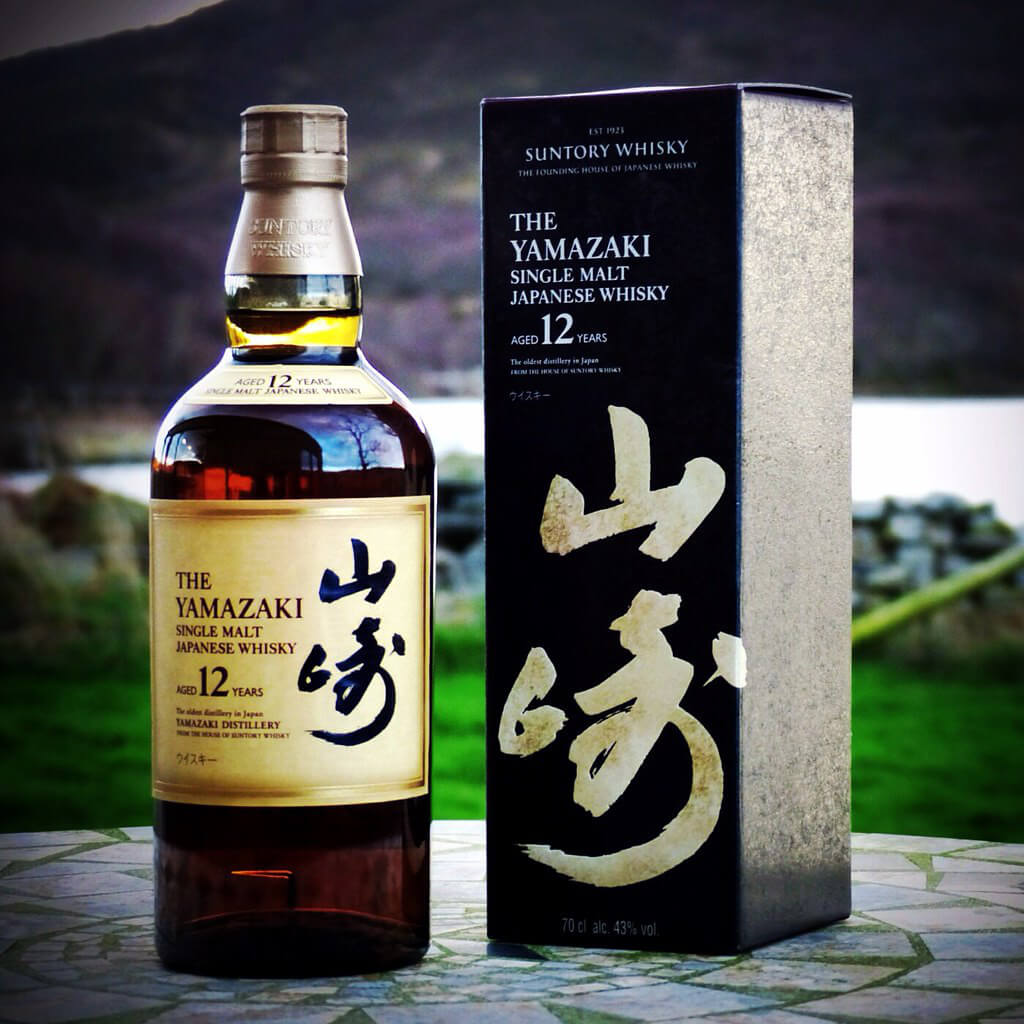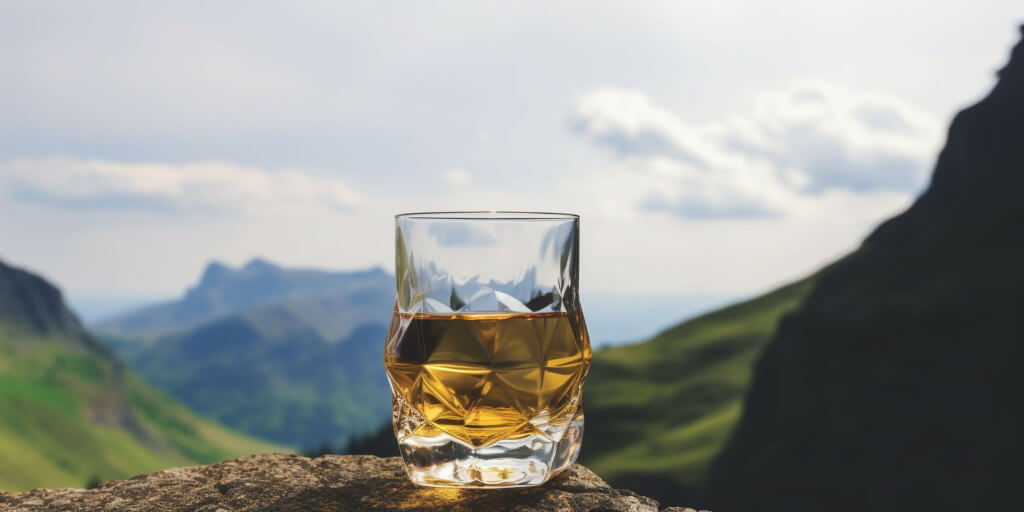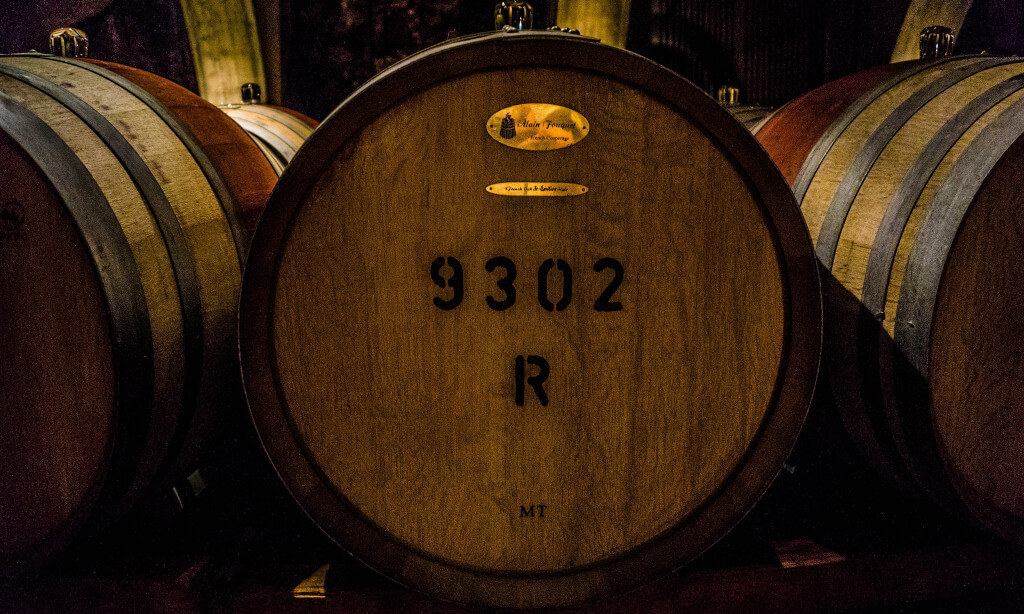The Similarities
The two most common whiskies consumed in the United States and Canada are bourbon and rye. Both are largely manufactured in North America. Both of these were developed several centuries ago by immigrants from England, Ireland, and Scotland. They both produce a similar-looking dark brown color and age similarly. They are the principal spirit in many well-known American cocktails and make excellent cocktail bases.
What Is Bourbon?
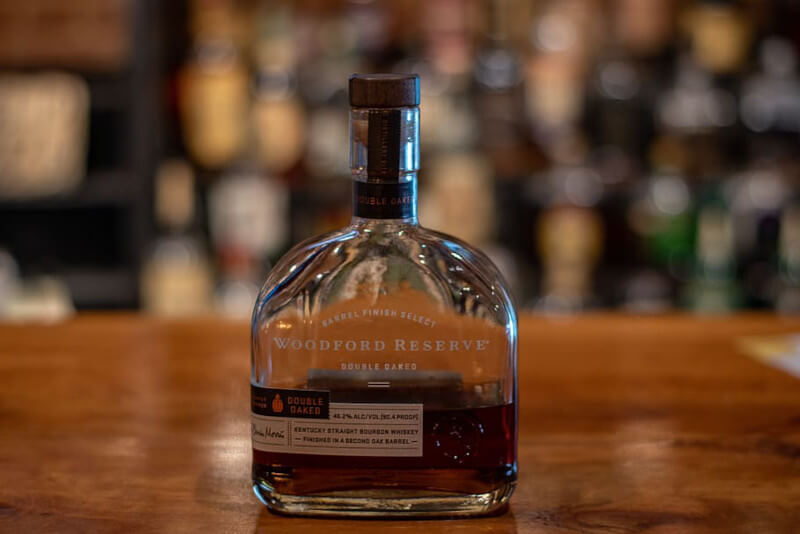
To begin with, though: Bourbon may be produced anywhere, despite what whiskey snobs may tell you. It can be produced in any state or territory in the Union, including Puerto Rico (although none has done so as of yet). At least 51% of the mash (cooked grains mixed with yeast) used to make bourbon must be maize. Malted barley, rye, and/or wheat are the most typical additions to the mash, but any other cereal grain can be used. It can’t be more than 62.5% ABV when it goes into the barrel, thus it must be distilled to no more than 80% ABV and “proofed down” (diluted) with water.
Bourbon must be matured in a fresh charred-oak container, but the amount of time it spends there is completely up to the distiller. To be classified as “straight,” however, a bourbon needs to be at least two years old. Any product with a shelf life of less than four years must prominently display its age. Some export markets, notably Australia, sell Bourbon at lower proofs than the required 40% ABV due to local taxes.
A Definition of Rye Whiskey
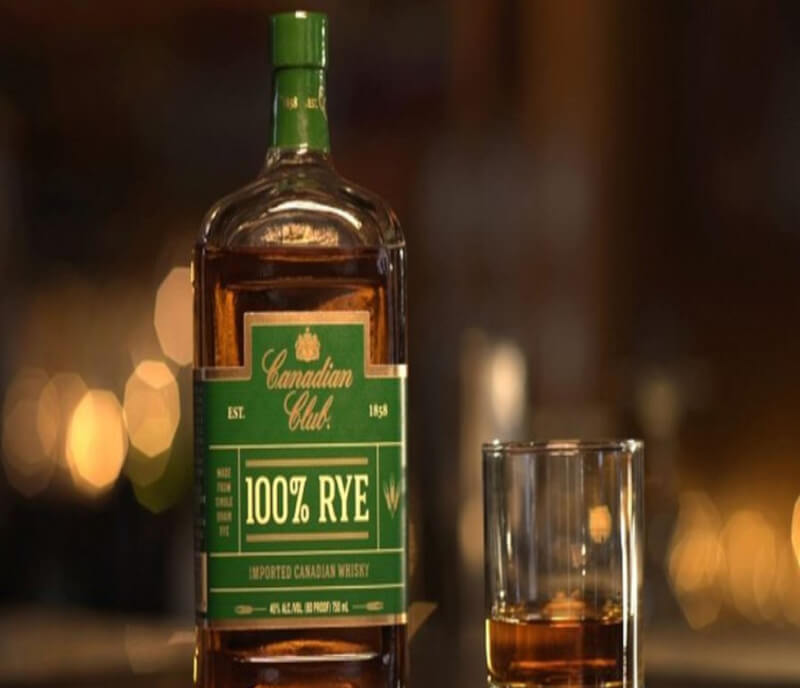
Although rye whiskey can be produced anywhere, in the United States it must meet specific criteria to be legally labeled as such: At least 51% of the fermented mash must be rye grain (other cereal grains are acceptable). It must be proofed down to 62.5% ABV or less before entering the barrel, just like bourbon, and distilled to no more than 80% ABV. A minimum of 40% alcohol by volume (ABV) is required, and it must be aged in new charred oak barrels before bottling.
The History
When immigrants from diverse regions of the world merged their skills in the 1600s, they created rye whiskey, the older of the two spirits. The Germans and the Dutch were pioneers in cultivating rye, which led to the development of rye. The Irish and the Scots, with their expertise in creating whiskey, then encountered this surplus of rye grain. During the late 1700s, when the American Revolution was happening, rye gained popularity. British supplies, notably Caribbean molasses and, by extension, rum, were being cut off to the colonies. Therefore, the patriots drank a locally produced spirit to satisfy their thirst.
Although bourbon has been produced in the United States since the 1800s, its history, and nomenclature are still shrouded in mystery. There are two popular explanations for the name: either it was called after Bourbon County, Kentucky, or Bourbon Street, Louisiana. Both of these places take their names from the European royal family known as the House of Bourbon. No matter the reason, most people knew that bourbon came from the South, and more particularly, the state of Kentucky. Many servicemen who were overseas during WWII said that bourbon was the only thing that tasted like home to them.
Substances and Condensation
While bourbon and rye are both distilled spirits, the ingredients used to make them are what truly set them apart from one another. By regulation, rye must make up at least 51% of the grain mix in American rye whiskey. Too much rye can be sticky and difficult to work with, so distillers don’t use more than they have to. The remaining 41% is typically made up of malted barley and maize. A larger percentage of rye typically (but not always) results in a more expensive final product. In contrast, bourbon must include 51% maize by volume.
From that point on, everything is routinely the same. For a truer, pre-Prohibition flavor, rye whiskey is typically made in smaller stills (25 gallons), while bourbon is typically distilled in considerably greater numbers (50+ gallons). Both must be a maximum of 125 proof at the port of entry and matured in freshly charred American oak barrels. There is no minimum age requirement, although “straight” rye and bourbon must be aged for at least two years and bottled at 40% ABV or higher.
Production Methodology
Two key components distinguish bourbon and rye from one another. Bourbons must have at least 51% maize to be legally labeled as such. At least 51% rye grain must be used in the recipe for it to be labeled as rye. Other grains, such as barley, corn, or rye, can make up the remaining 49% of each spirit. Both need to be kept in charred new oak barrels.
Also, unless you’re making Canadian rye, none is bottled at less than 80 proof and is distilled at no more than 160 proof. Officially, Canadian rye only merely tastes like rye to be considered rye. Straight rye whiskey and straight bourbon whiskey are the results of at least two years of aging in a warehouse.
The Flavour
Despite sharing a common production method and ingredients, bourbon, and rye are noticeably different in flavor. Tastes vary by brand, but generally speaking, rye and whiskey have certain characteristics:
Rye
Rye is more acrid in flavor. In addition to oak, smoke, and fruit, many people detect hints of grass and pepper.
Bourbon
- Compared to rye, bourbon is generally agreed to have a sweeter flavor thanks to the presence of vanilla, caramel, and oak.
- When compared to rye, bourbon has a more subtle flavor and a smoother texture.
Young rye and bourbon are quite similar and hard to distinguish from one another, yet as they age, the two take very different paths. While bourbon’s maize basis often delivers a considerably sweeter taste, well-aged rye imparts a peppery and savory note on the palate. Finishing the liquor in an old sherry cask, for example, adds sweetness without changing the spirit’s base character.
While both bourbon and rye whiskies have a long and storied history, they are distinct from one another in terms of materials used, production techniques, and flavor. Both are staples in many traditional American cocktails and work wonderfully as the foundation for other drinks. Both bourbon and rye must be matured in new charred oak barrels, with bourbon requiring at least 51% corn and rye requiring at least 51% rye grain. Rye is more bitter than bourbon, which is more sweet. Both liquors have their distinct personality and are important to the lengthy history of alcoholic beverages in North America.


